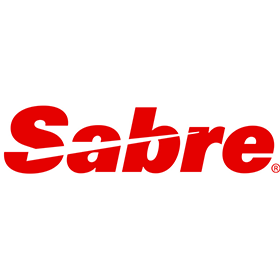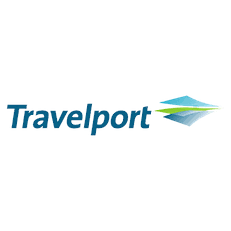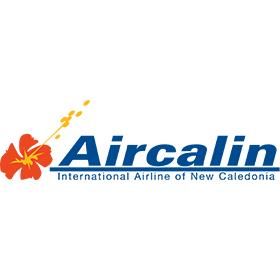What is a Global Distribution System (GDS)?
The modernised booking process was first made possible with the creation of GDS (Global Distribution Systems) that works as a network to connect the world's airlines, hotels and other travel suppliers. This automated system allows us as customers to access broader travel options and make bookings to our liking through travel content platforms.
But, how did it all begin?
The History of GDS
1950 - Traditional ticketing process
Back in the 1950s, airline reservations systems were still very traditional. Ticket operators sit in a room with physical hand-written cards that represent each seat on aeroplanes while assisting customers through phone calls. Going back and forth to the airline’s inventory by hand, they check flights, availability of the seats and fill the passenger’s information manually. One booking could take up to an hour, or even more.
The whole booking procedure was slow and challenging for ticketing agents to process, especially with large volumes of bookings. Serious errors could happen during several tasks as manual ticketing processes are prone to inaccuracy.
1964 - IBM’s SABRE, the first-ever computer reservation system (CRS) to launch
American Airlines wanted a system that would allow real-time access to flight details and an automated system of their booking and ticketing processes. An IBM salesperson and the CEO of American Airlines then initiated the development of an automated reservation tool.
US military allowed IBM to reuse some of its groundwork system, SAGE and created the first-ever computer reservation system (CRS) known as Semi-Automated Business Research Environment (SABRE).
In 1964, SABRE became the first CRS and could process more than 7000 bookings per hour. Not only could American Airlines check their inventory bookings in seconds but the system could also store passenger’s information such as names, phone numbers and itineraries. Not long after, other airlines joined the CRS race and built their programmed reservation systems with the help of IBM, including Apollo by United Airlines.
1974 - Travel agencies shared CRS and conjoined with airlines
While airlines were automating their booking process, travel agencies struggled and remained fully manual. They had to call a ticket agent at the airline to check seat availability. The only way to keep travel agencies updated and capable of selling more tickets was by setting a direct connection to the airline’s CRS.
As more airlines connected to the CRS systems, travel agents could choose which airlines they wanted to work with. Airlines then began installing their proprietary internal reservations systems in travel agencies. Since then, 60% of bookings were made through travel agencies. The affiliation between airlines and travel agencies caused a great change in the travel industry.
1978 - The emergence of GDS in the US
In 1978, due to the economic condition in the US, the government no longer regulated the airline industry and carriers were now free to set their prices and establish their routes. Airlines started to share CRSs and those who participated in the distribution had to pay commission. This process led to the emergence of a new term called the Global Distribution System or known as GDS to keep track of flight availability, schedule, and prices.
However, due to the high competition, airlines attempted to boost their position in the market and began raising fees for competitors, delaying schedule and tariff updates. Before this, travel agencies spent quite an amount of time entering reservations and pricing itineraries off tariff books.
Airlines realised the current system’s inefficiency and formed a new GDS model known as the GDS-centric distribution model. This allows travel agencies to connect to various airlines and terminals that have access to the GDS content as well as a third party company such as ATPCO (Airline Tariff Publishing Company) making the price more dynamic.
1987 - Europe’s Own GDS
In 1987 Lufthansa Airline along with Air France, SAS, and Iberia developed a new GDS called Amadeus. In the same year, British Airways, Aer Lingus and KLM Royal Dutch Airlines established Galileo and is now the largest European GDS. A couple of years later, European GDSs formed partnerships with US-based systems and began providing services internationally. Entering the 90s, Amadeus started to absorb smaller GDSs outgrowing the European market and eventually became the largest distribution system in the world.
2000- The era of Internet and online booking
As the internet became more available in the 90s, this meant new opportunities for airlines, travel agencies, and GDS providers. Electronic ticketing was introduced, digitalisation of the whole booking process expanded.
As a result, Airlines and IT companies created their own travel websites and online reservation platforms such as Travelocity, Expedia, Orbitz and Hotwire. Consumers were able to reserve and purchase tickets easily and efficiently from websites and online travel purchases grew rapidly.
Where to from here?
With the rise of technology and the internet, online reservation systems became much more secure, providing fast processing and accuracy to transport millions of people across thousands of routes each year. The GDS seemed to have established a permanent place in the distribution chain for travel shopping however a new entrant introduced by the airlines called NDC (New Distribution Capability) may cause a significant dent in the GDS dominance.
With increasing GDS fees and demand for the ability to sell ancillary services such as purchasing seats and meals, that the GDS could not meet, airlines sought out a technology alternative that once again enabled them to connect directly with their end customer. As of today, there are more than 60 carriers that are either NDC certified or XML-capable.
The impact of NDC is still not certain and due to Covid, its still not clear - only time will tell. While we wait for that, here's the summarised information on how the journey looks:








